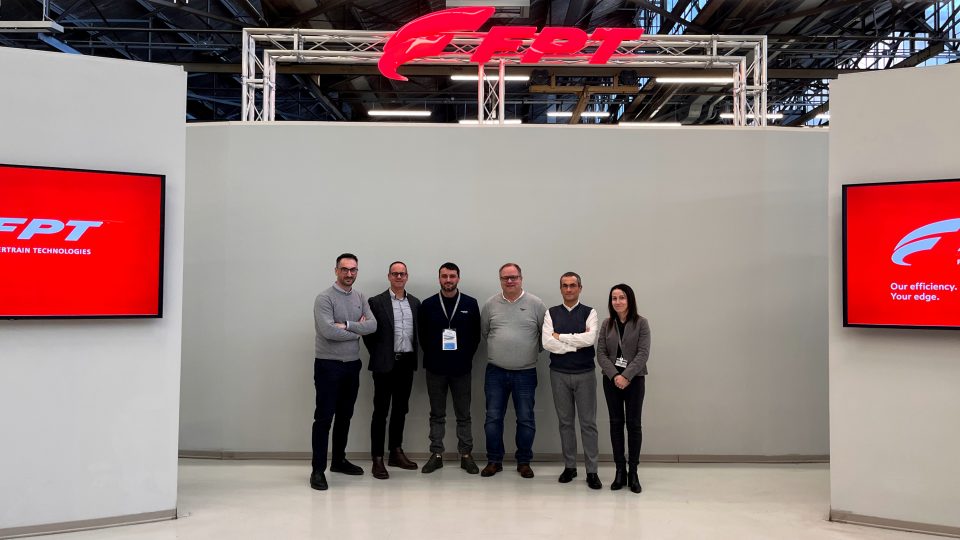AEM advices for minimizing the impact of rising fuel prices
Through the first week in July, the average prices of fuel was nearly 70% higher than the year prior. AEM gives some advices

AEM has provided a short vademecum with some advices to reduce the problems triggered by fuel prices increase. A little more than half a year before the 2023 edition of CONEXPO (HERE you can find an engine report on the 2020 edition, held right at the outbreak of the worldwide pandemic), in July, when the average price of diesel fuel was nearly 70% higher than the year before, Association of Equipment Manufacturers intervened.
Some advices from AEM about fuel prices increase. Roberta Wright from Lynchburg
Roberta Wright, CEM and Fleet Coordinator for the City of Lynchburg, Va., has learned to shop around when it comes to fuel prices. In 2018, when she discovered she could get a better price from other vendors than the vendor on contract, she broke the contract and started to get quotes for every load of fuel. The net savings added up to more than $103,000 over 5 years. With an increasing number of supply chain issues, this year Wright has returned to contract purchasing, but with a twist. She asked participating vendors to show documentation of what they paid for the fuel, plus their constant, delivery fees and the total price per gallon of fuel for each load. “It’s not that I am trying to undercut everyone. It’s my job to get the lowest price.”
Fleet management software and telematics
Telematic data offers valuable insight into fuel efficiency and machine utilization. “Across the industry, telematics data is often underutilized,” says Larry Herman Jr, Telematic Support Supervisor at RDO Equipment Co., which represents CONEXPO-CON/AGG exhibitors John Deere and Vermeer.
According to Herman, manyfactors can contribute to fuel burn rate and excessive fuel consumption. “Telematics systems, like John Deere’s JDLink, can track utilization data including idle time, fuel consumed while in idle, and compare that data across the fleet to identify opportunities for improvement,” says Herman. JDLink’s Machine Analyzer tool allows managers to compare data for the entire fleet, specific groups of equipment, or machine types. Another area to focus on are the gears or modes the machine is being operated in. “If a machine isn’t being operated in the optimal mode (eco, production, etc.) or in the optimal gear, it won’t achieve maximum fuel efficiency,” says Herman. According to him, John Deere’s JDLink system allows managers to see where their machines are hitting key utilization on job sites. This is based on machine load factors, engine loads, and gearing. “Too much hard utilization and you are wearing the machine and burning more fuel,” says Herman. “Too Low utilization and you are burning excessive fuel where a smaller machine could better perform that work.”
“Auto-idle/shutdown can be beneficial in some situations, but not every situation as each business and use-case is different,” says Jacob Koon, an RDO telematics consultant based in Texas. “For example, an excavator on a pipeline job may be continually digging and have relatively low idle. That machine may be a good candidate for auto-shutdown because its job is to be constantly “working.” However, another excavator on that same job may have very high idle because it’s being used to hold the pipe in place while it’s being attached.”
Be transparent with customers when implementing a fuel surcharge
California-based, Graniterock burns through approximately 3 million gallons of diesel fuel each year, producing and delivering concrete and other materials to customers in the San Francisco Bay area. “We pride ourselves on setting a price and sticking to it,” says Rich Sacher, Executive Vice President of the Materials division. “However, this year, we could never keep up with the velocity of change.” As a result, the company did something it has never done before– it instituted a fuel surcharge. The fuel surcharge is based on a publicly available data source and adjusted monthly. According to Sacher, Graniterock chose a fuel charge, because they believe it is the fairest option that offers full transparency to their customers. To ease the burden, they stood behind customers with long-term commitments.
Convert trucks to compressed natural gas hybrids
According to Green Energy Solutions Business Development Manager Kyle Flint, one of their clients, Oklahoma-based B&H Construction, has seen fuel costs go from $11,600 per employee to $4,800 per employee after converting most of their truck fleet. “Everything more than a half-ton has been converted,” says Flint. Conversion kits are easily installed and include a tank package suited to the vehicle, plus hoses, tubes, fittings, pressure regulator fuel delivery system, sensors, and processors. The cost for a diesel assist kit is approximately $15,000-$20,000, while the cost for a gas kit is $13,500-$15,500. There are a number of government incentives for organizations that convert their vehicles to CNG because it is a renewable, clean-burning biofuel. Green Energy Solutions will have products on display at CONEXPO-CON/AGG 2023.
Machine maintanence
Finally, according to RDO’s Herman, air filters should be cleaned daily and changed regularly. Fuel filters should be monitored for water or sediment that could lead to poor fuel economy. Lastly, be sure track tension and tire pressures are set to the proper points to avoid overworking your machines and burning more fuel than is necessary.









